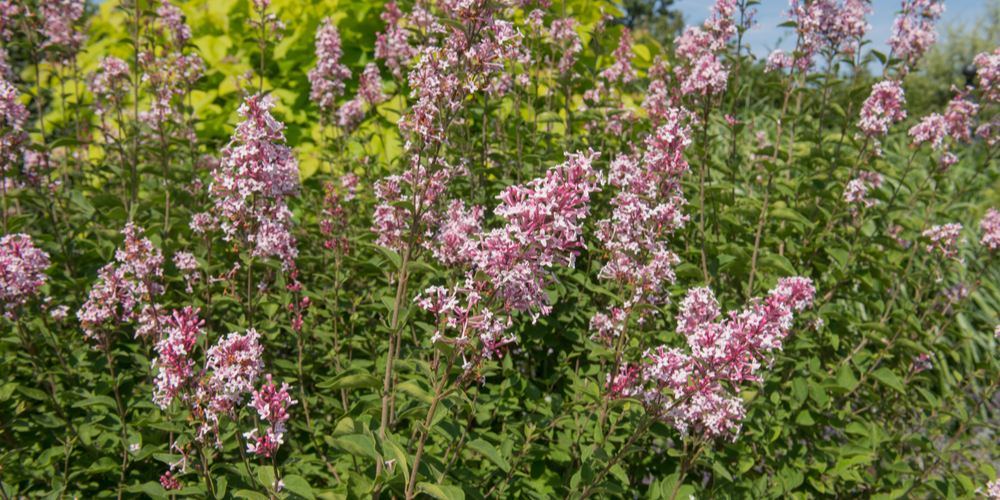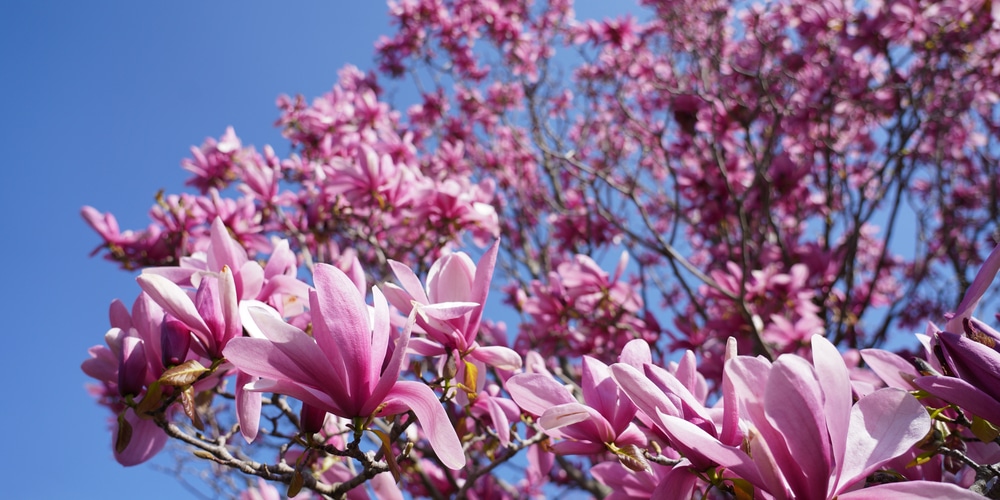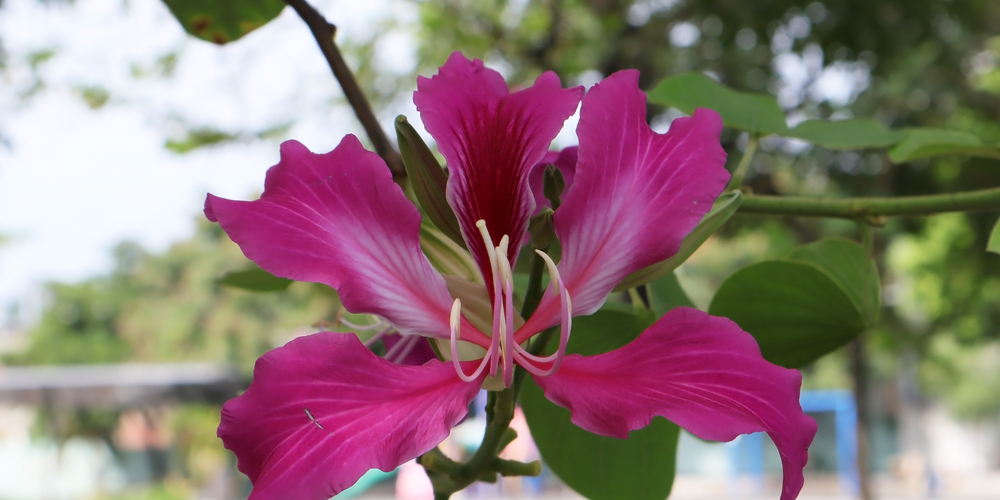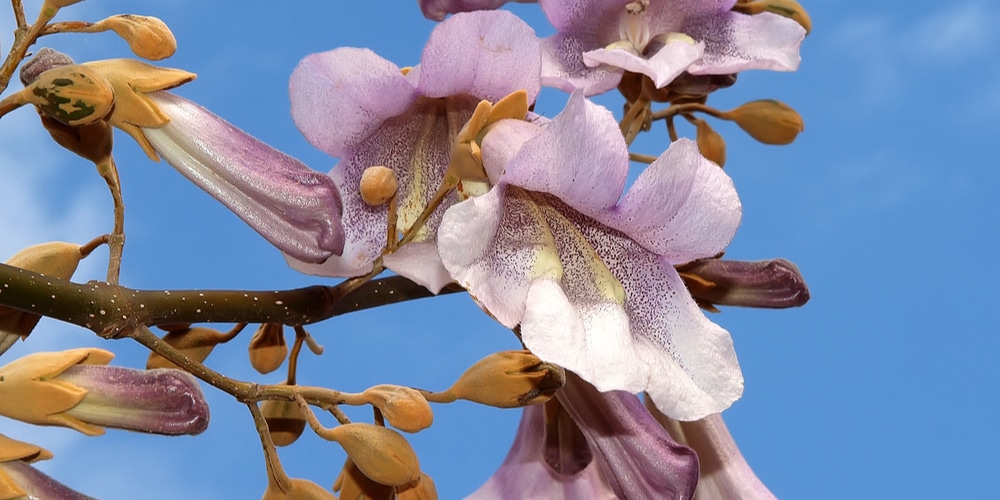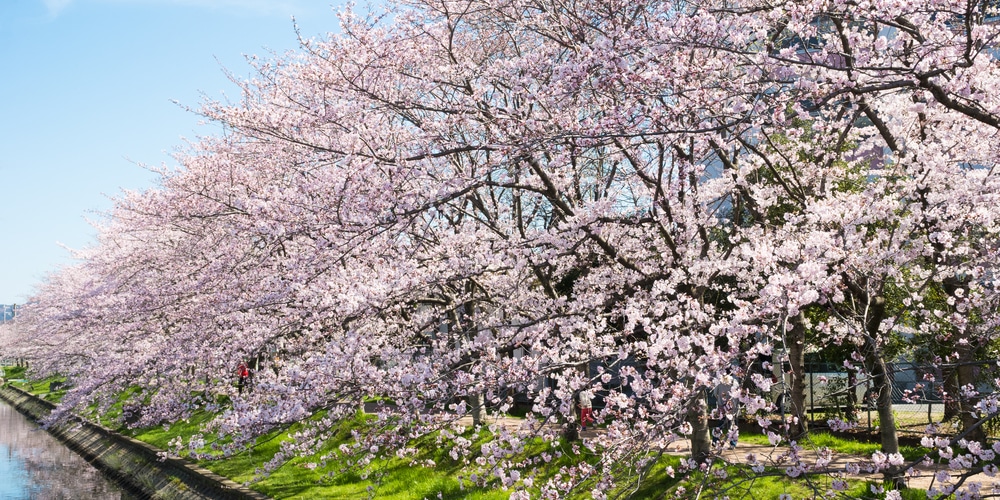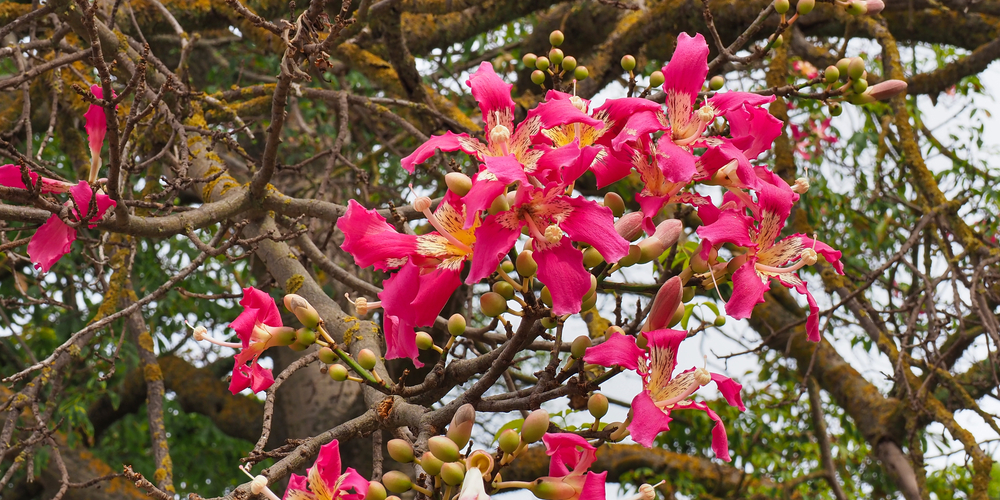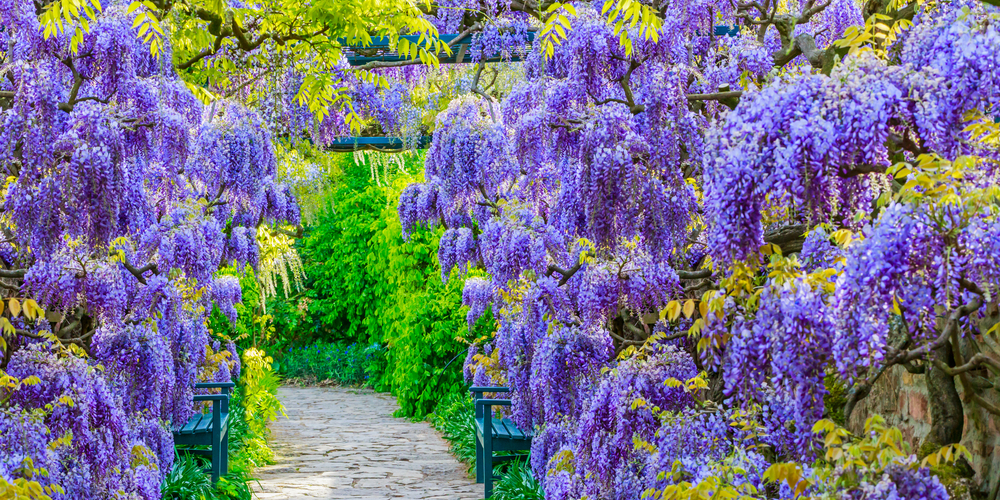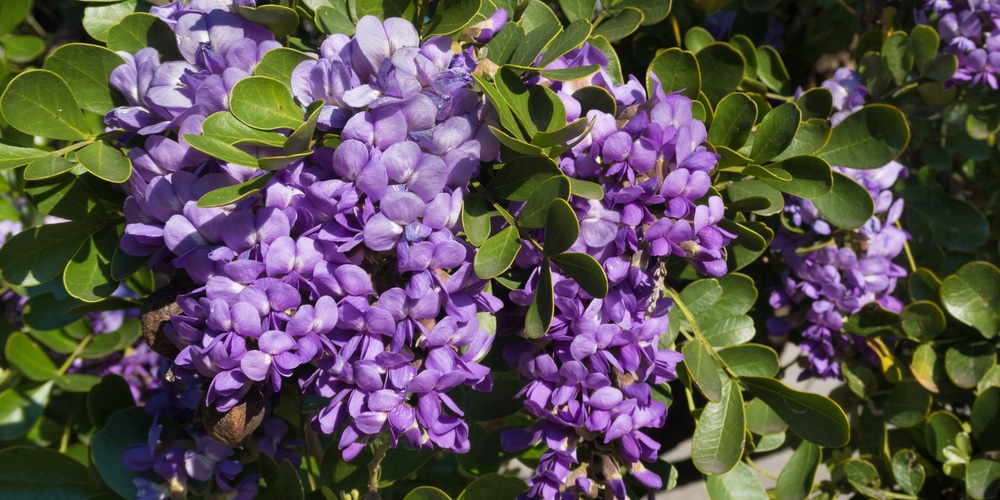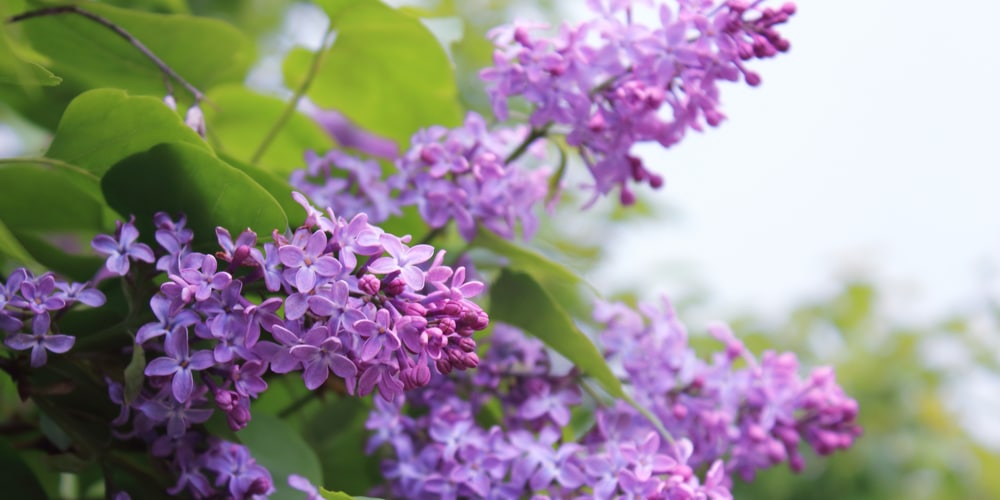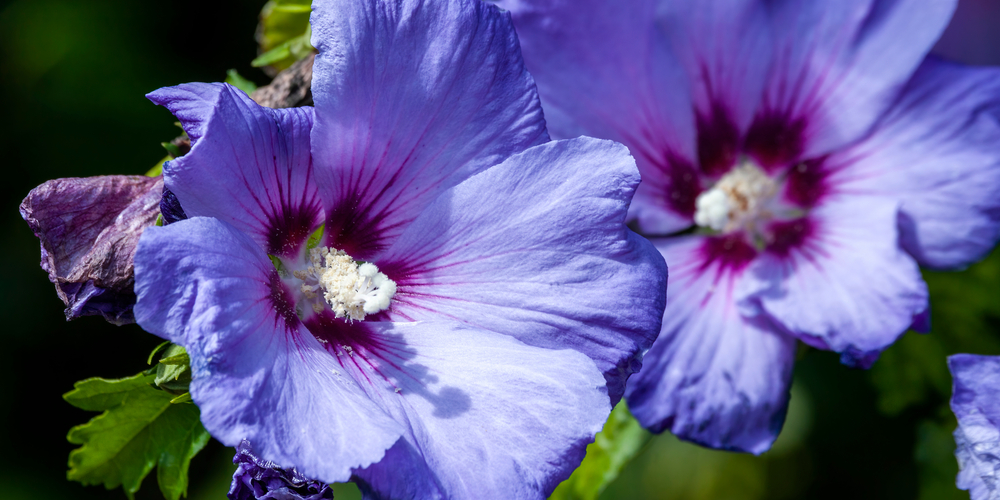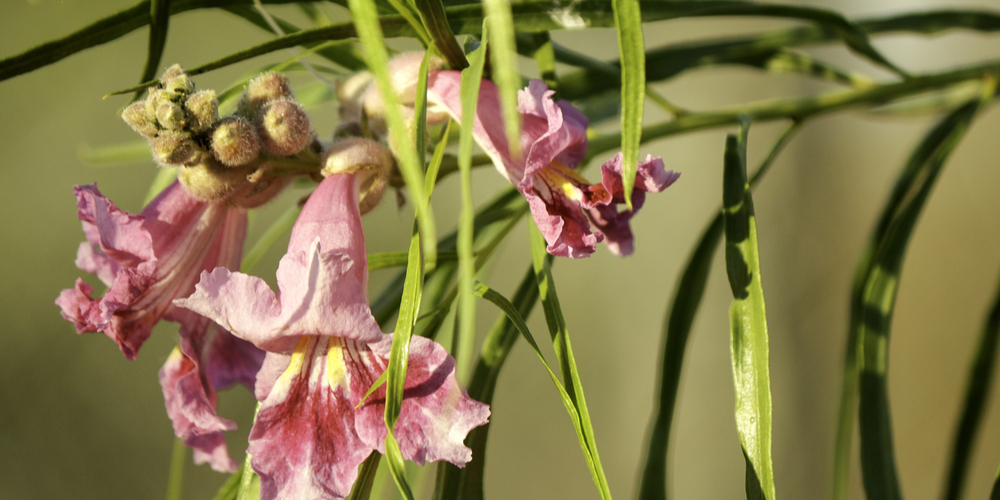Purple is the color of royalty, and if you can’t get enough of it then you might want to add some of the color to your outdoor landscape, too. Let’s look at trees with purple flowers.
Trees with purple flowers
Here are 12 examples of popular trees with purple flowers.
Fragrant Lilac
Fragrant lilac is technically a shrub but it mimics the growth and spread of a tree. What’s undeniable though is the fact that it produces one of the cutest blooms that are not only pleasing to the eyes but to the nose as well.
Gardeners can take their pick of the 200-plus species depending on the space they have. You won’t have to worry about care or zone requirements as they can practically grow anywhere as long as there’s plenty of light and adequate moisture.
Magnolia Royal Purple
Make room for the Magnolia ‘Royal Purple’ if you can as the space is more than worth it. The purple flowers that come out of the tree are superb and have multi-faceted hues (white on the inside, lilac on the out) and top out at 8 inches in diameter.
To create the perfect condition for the tree you’ll need adequate protection from the wind and exposure to full sun. Then, keep the soil acidic and slightly moist and you’ll have a fine purple-flowered specimen for years.
Purple Orchid Tree
Purple Orchid Tree is sometimes called Butterfly Tree because when it blooms the flowers appear like magenta butterflies about to flutter away. You’ll love the purple pop and the heart-shaped leaves and how it makes your yard or garden instantly better.
What’s great about the Purple Orchid Tree is that it can grow in a large container and indoors, too. Just make sure it gets adequate sunlight and don’t let it dry out too much.
Royal Empress Tree
Invasive in some states such as North Carolina, the Royal Empress Tree is as stately as it sounds, towering up and above your landscape over time.
The purple downward-facing flowers are a worthy mention- once they appear the whole yard will have that sweet vanilla smell. It grows quickly and changes color and appearance all-year round. It’s definitely an exciting tree to have as long as you’re willing to put in the work to maintain it.
Takasago Flowering Cherry
The Takasago is different from the usual Japanese Cherry Trees in that it sports purple flowers instead of the usual pink and white. It grows to a maximum height of 20 feet but is low-slung and branches out horizontally to cover more ground.
The tree only grows in USDA zones 5 but if you’re lucky enough to live in this region, then by all means you should give it a try. Put it in a sunny spot in your garden and adapt a regular watering schedule so it stays happy.
Silk Floss Tree
A strange tree in both appearance and name, the Silk Floss Tree surprisingly has many uses- as a rope, paper, wood pulp and canoe, to name a few. It loves warm climates and can thrive in zones 9 through 11.
The large tree can reach a maximum height of 60 feet and form a natural umbrella. Come fall season the Silk Floss Tree sheds its leaves and creates five-petaled purple flowers with unique markings in the middle.
Purple Wisteria
No list of purple flowering trees would be complete without the Purple Wisteria. It’s the most popular tree in the list and grows in just about any environment in the US, particularly zones 5 to 9.
Purple Wisteria is incredibly tough and can withstand diseases and drought. Beneficial wildlife such as butterflies and hummingbirds love the cascade of bluish-purple flowers that hang onto vines come summer season. Make sure to plant in full sun to partial shade in the afternoon to keep it healthy and growing.
Mountain Laurel
Related to North American rhododendrons, the name might sound intimidating but the specimen grows only to around 15 feet tall. Mountain Laurel is perfect for small yards and those who want to have more plants.
Mountain Laurel grows in zones 5 through 9 and in virtually any soil. It can tolerate all-day sun but thrive in locations where it can get partial shade in the afternoon.
Korean Lilac Tree
The Korean Lilac Tree is the answer to those who want a Jacaranda but live in colder regions. The small-sized tree only grows to 10 feet and pairs well with shrubs and plants that produce purple blooms.
The tree is relatively easy to grow and only requires bright sunlight and occasional watering. Come springtime you’ll be treated to bursts of lavender-hued tubular flowers.
Hibiscus Tree
Rose of Sharon can be a shrub or a tree depending on what you want. The flowers appear similar to a hibiscus flower- large and showy, with a creamy center that butterflies and hummingbirds love. Unfortunately, the flowers only tend to last a day or two but the tree continuously produces buds to replace the spent ones.
Hibiscus syriacus grows in zones 5 to 9 and loves well-draining soil and full sun. It’s highly tolerant of drought and isn’t affected by most pests and diseases.
Dogwood
Dogwoods are mostly known for having white flowers, but there’s a variety called ‘Purple Glory’ that produces purple-tinged blooms all year.
The tree grows best in zones 5 through 9 and under full sunlight. The cooler the climate the better its condition and the less you’ll need to water.
Purple Dogwood Trees generally grow up to 20 feet tall and have the same spread, which means you’ll have to do some careful planning first before you plant them.
Desert Willow
Despite the name, desert willows aren’t willows although they have the same deciduous long leaves and the characteristic weeping form. The Burgundy Desert Willow shows up with clusters of trumpet-shaped burgundy and purple flowers in spring and early summer provided that they get enough sun and water.
Chilopsis linearis can get up to 30 feet in length but they can be put in containers as well. Watering is a must especially on hotter days.
Related Article: Purple Indoor Plants to Brighten Your Home
